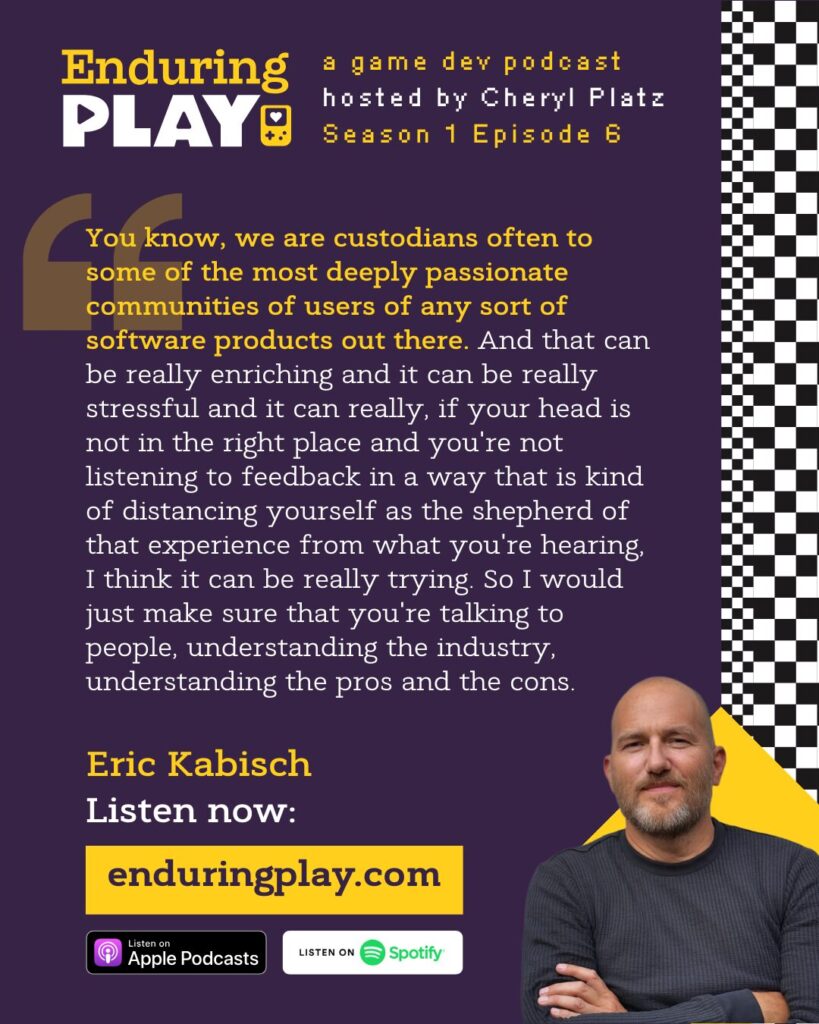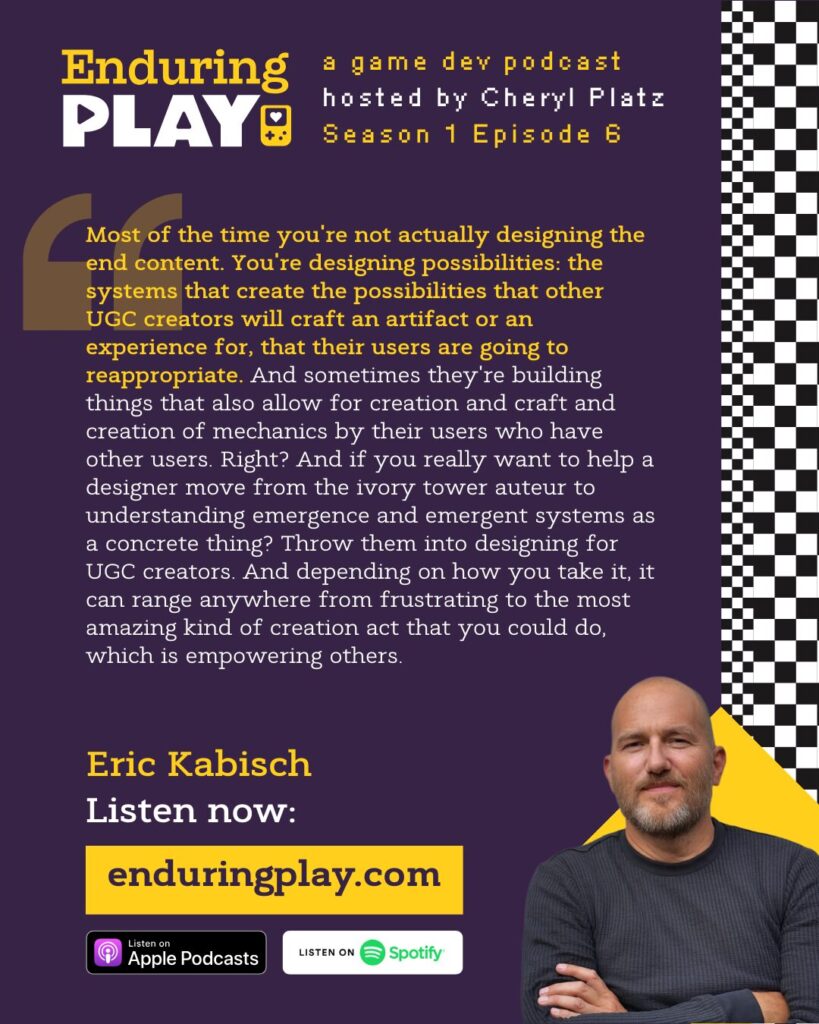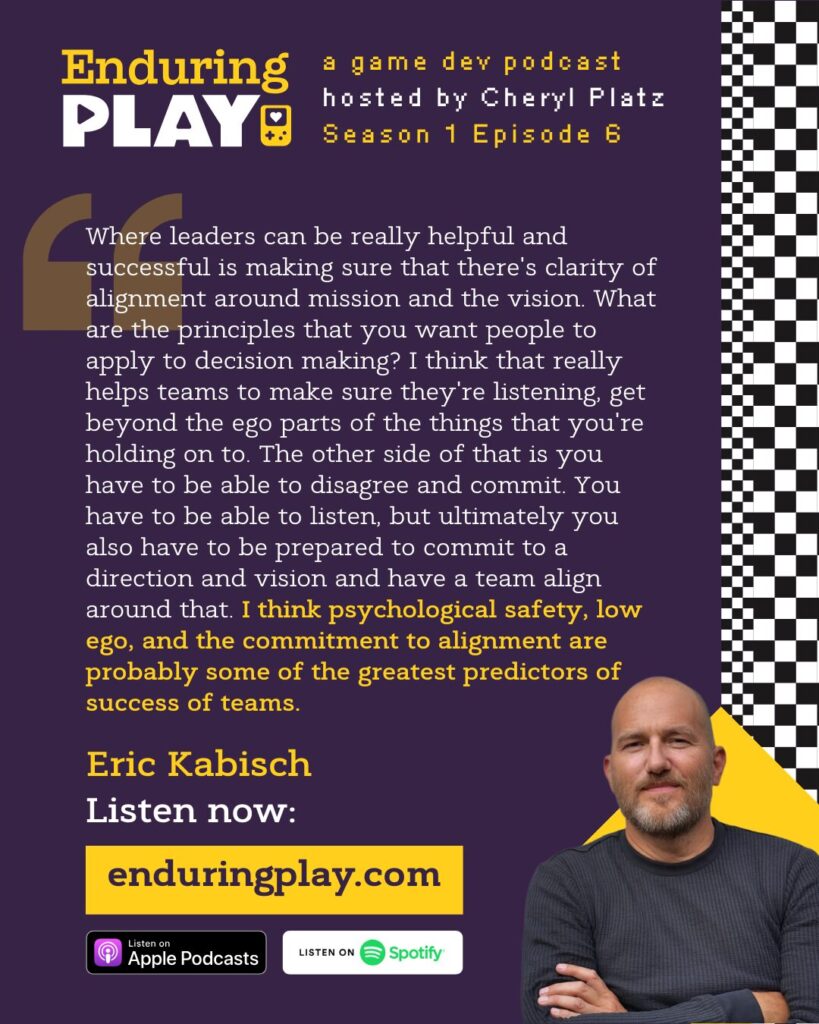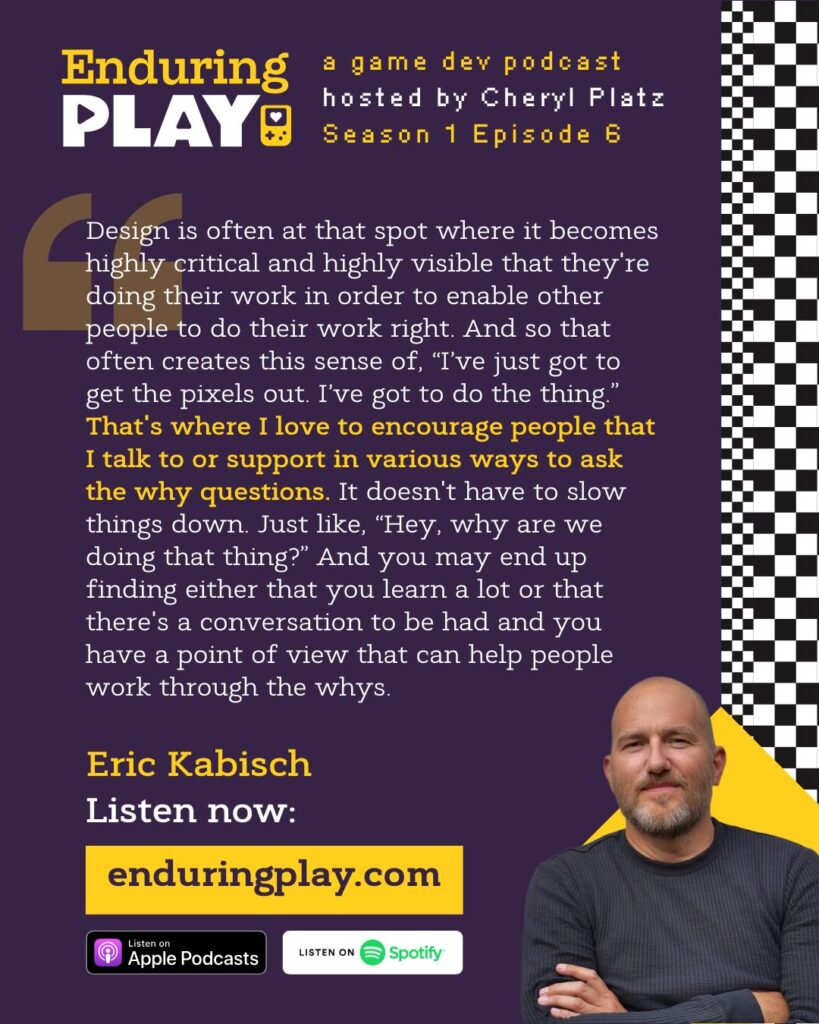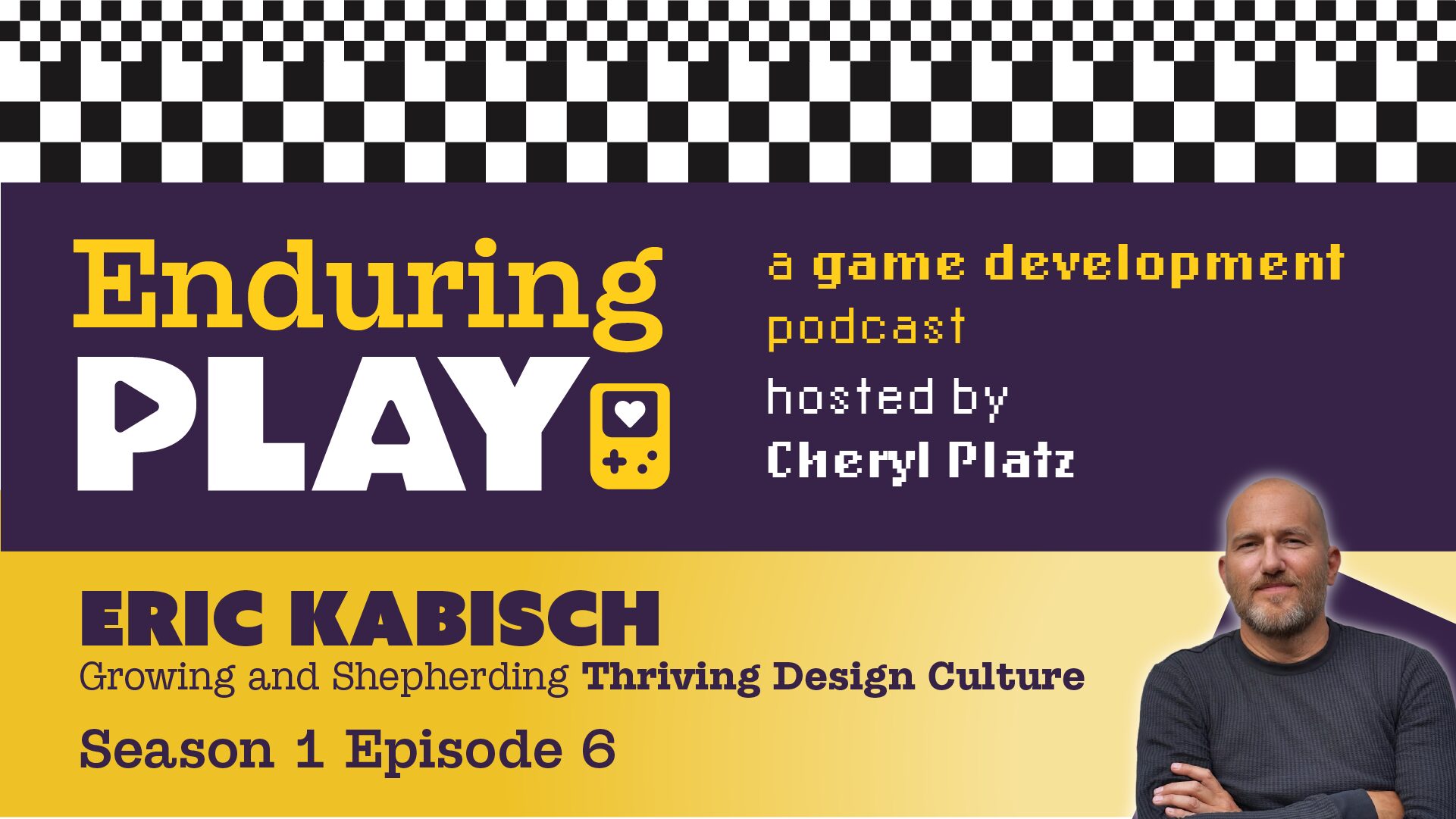The sixth episode of Season 1 of Enduring Play: hosted by Game Development Strategy Guide author Cheryl Platz, is now live with guest Eric Kabisch, a seasoned gaming design executive with experience at companies like Scopely, Roblox, Google, and VRChat. This episode provides a rare look behind the veil of the life of a design executive working at global scale in the video game industry and succeeding with multiple companies, while learning from the engagements that didn’t go as planned. Eric’s approach is deeply people-focused, with advice about leading with curiosity that can apply to people at all stages of their career.
Stream now or visit the show notes page for full details:
Key Quotes
On design as a “blocker” in the process:
“Design is often at that spot where it becomes highly critical and highly visible that they’re doing their work in order to enable other people to do their work right. And so that often creates this sense of, “I just got to get the pixels out. I got to do the thing. I got to make decisions here.” That’s where I love to encourage people that I talk to or support in various ways to ask the why questions. It doesn’t have to slow things down. Just like, “Hey, why are we doing that thing?” And you may end up finding either that you learn a lot or that there’s a conversation to be had and you have a point of view that can help people work through the whys.“
On the role of leadership on game development teams:
“Where leaders can be really helpful and successful is making sure that there’s clarity of alignment around mission and the vision. What are the principles that you want people to apply to decision making? I think that really helps teams to make sure they’re listening, get beyond the ego parts of the things that you’re holding on to. The other side of that is you have to be able to disagree and commit. You have to be able to listen, you have to be able to be in a safe space where you’re sharing your point of view, but ultimately you also have to be prepared to commit to a direction and vision and have a team align around that. I think psychological safety, low ego, and the commitment to alignment are probably some of the greatest predictors of success of teams.“
On reconciling the energy from passionate communities during the day job:
“You know, we are custodians often to some of the most deeply passionate communities of users of any sort of software products out there. And that can be really enriching and it can be really stressful and it can really, if your head is not in the right place and you’re not listening to feedback in a way that is kind of distancing yourself as the shepherd of that experience from what you’re hearing, I think it can be really trying. So I would just make sure that you’re talking to people, understanding the industry, understanding the pros and the cons.“
On designing experiences we don’t control in user-generated content powered worlds:
“Most of the time you’re not actually designing the end content. You’re designing possibilities: the systems that create the possibilities that other UGC creators will craft an artifact or an experience for, that their users are going to reappropriate. And sometimes they’re building things that also allow for creation and craft and creation of mechanics by their users who have other users. Right? And if you really want to help a designer move from the ivory tower auteur to understanding emergence and emergent systems as a concrete thing? Throw them into designing for UGC creators. And depending on how you take it, it can range anywhere from frustrating to the most amazing kind of creation act that you could do, which is empowering others.“
Share on Social Media
